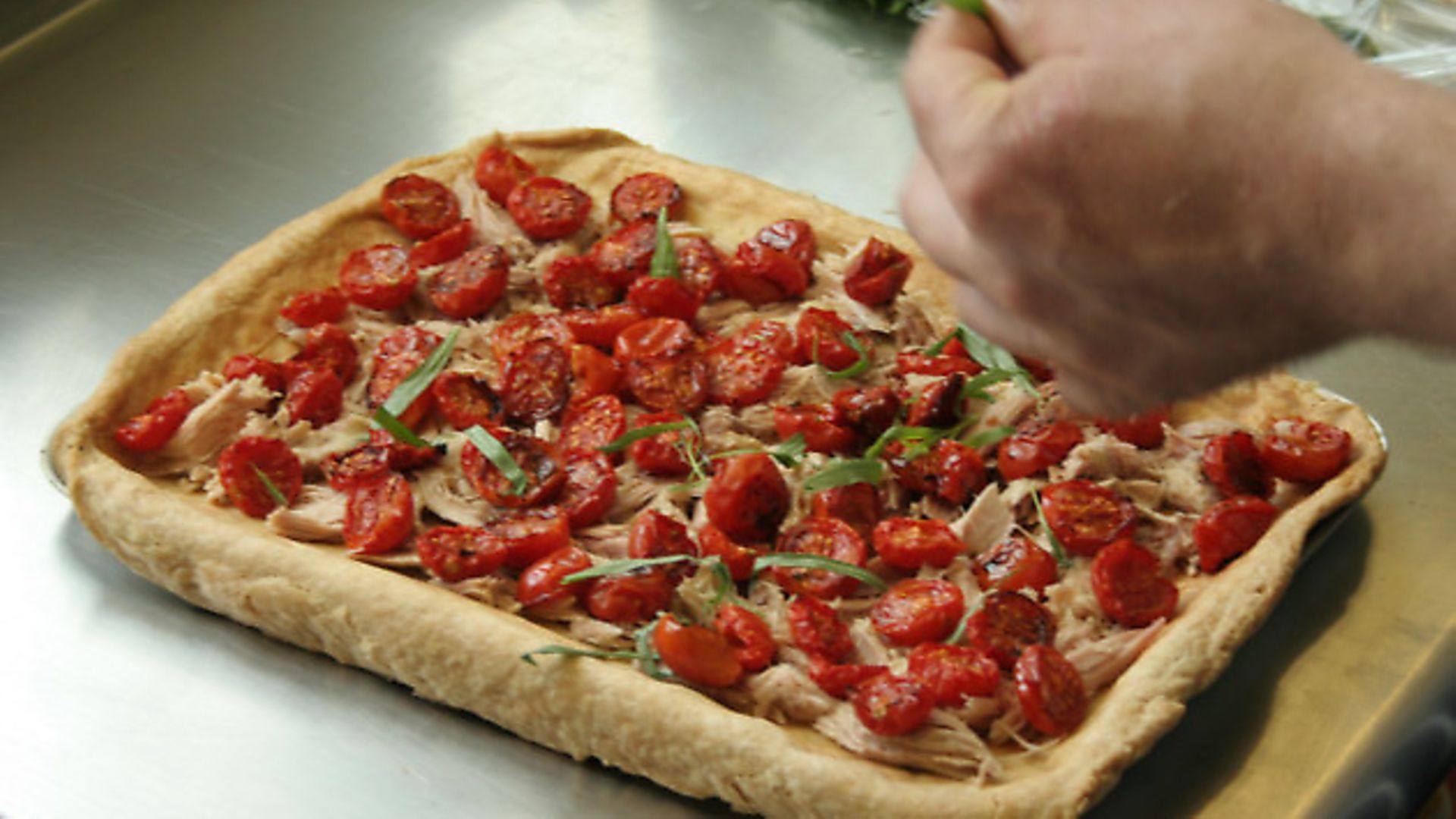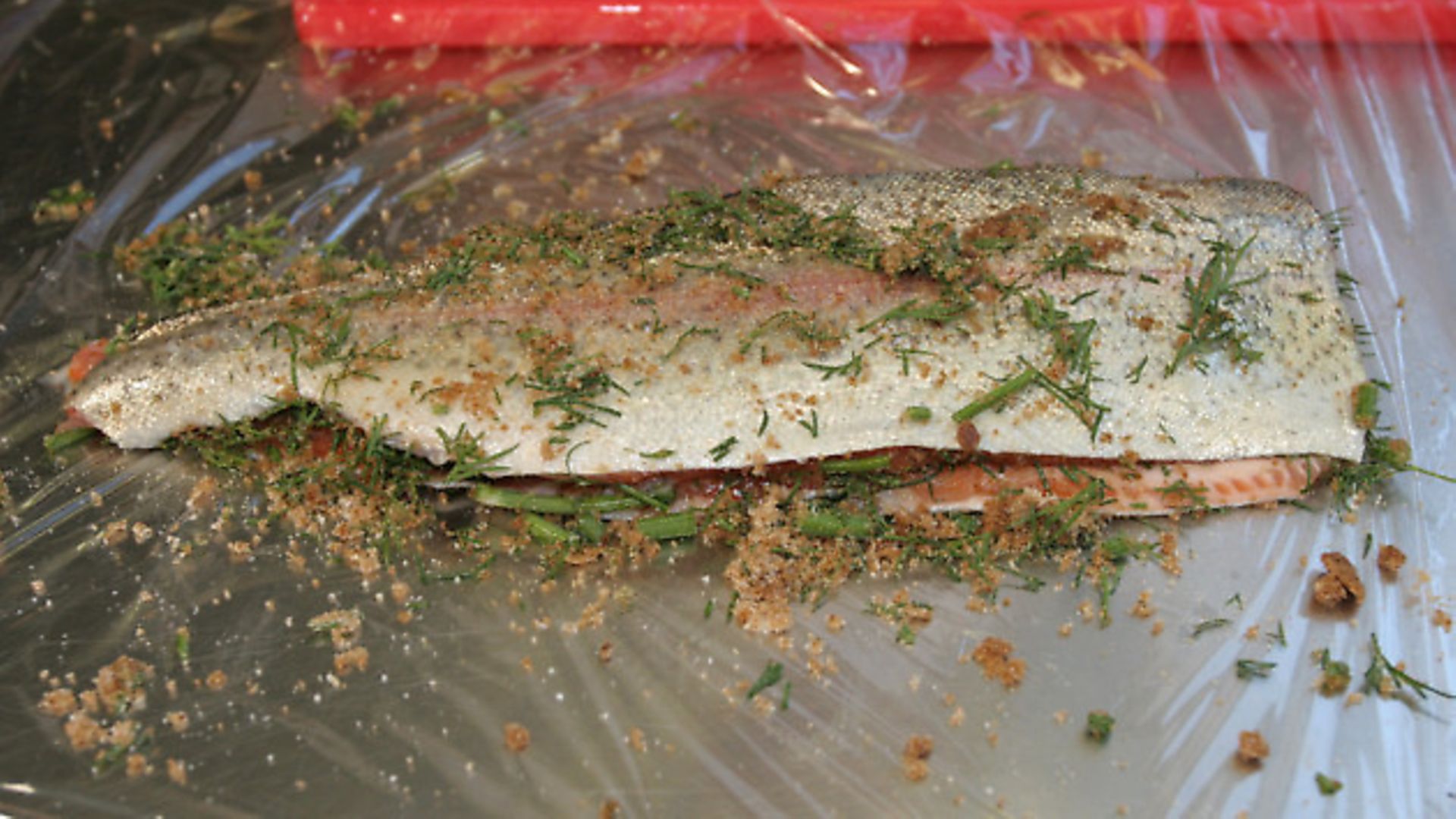Mark tackles stage one of the ‘skinted’ Ultimate Game Feast – the hors d’oeuvres – and explains how to avoid pitfalls when making ‘hundreds of little mouthfuls’
 credit: reb
credit: reb
If you are entertaining to impress, be it lunch on a shoot day in the middle of the wood in rural England or a swept-up Christmas do, a nice classy touch is to make some canapés.
 credit: james m
credit: james m
When making canapés you need to make sure that each one is about the size of a mouthful; if your guests are having to take bites, the canapés are far too big. And when choosing your mini mouthfuls, consider what your guests are going to be doing next: if they are going to go back out shooting for the rest of the day then I would avoid anything heavy with a lot of cream. I would also avoid making canapés with too much pastry in them, as after about ten of them your guests will start to feel really full and have no room left for the rest of the meal!
If we’re on a budget we must do things that are good but cheap. The most expensive ingredient of all meals is the meat portion, but luckily we are clever country folk who have access to game, so meat purchases are not our concern.
Often in catering you will find that doing something creative and clever with ingredients is much better than reaching for the most expensive ingredient that has loads of flavour. Take the chilled pea soup, for example; here we have taken a really basic and sometimes overlooked ingredient and, by being careful and adding a few choice, cheap ingredients, we have created something that is really cheap and really good.
It’s important to remember when making canapés that it takes quite a while to make hundreds of little mouthfuls. Most people who cook at home have experience of, say, roasting a whole leg of venison which will feed ten people. In the same way, for canapés you can cook a large piece of meat and slice it up into smaller mouthfuls. Don’t make the mistake of thinking that canapés for 200 people involves making 200 tiny individual tarts; you need to do something you can cut into squares or slice up into smaller bits, or you will run out of time, patience or both!
On the subject of tarts, pastry is the obvious thing to hold your filling but don’t overlook lighter things like bread, toast or even vegetables like cucumber or celery to keep it light and crunchy. Whatever you use, make sure that you cut the bottom of it so that you form a base.
At the risk of digressing too much, I would like to say that the two best meals of my life were both in Italy; one was cured pork cheek and the other braised ham shank. The cost of producing both of these dishes would have been very low indeed. I have been lucky enough to eat in some really fantastic restaurants across the world, and while the food was really incredible, it never captivated my imagination as much as those two unassuming meals I had in Milan.
Anyway, let’s return to this month’s recipes. With all these issues in mind, we have chosen rabbit, tarragon and roasted cherry tomato tarts, chilled pea soup and gravadlax as our canapés of choice when on a budget.
Next month: Push the boat out canapés.
1. Rabbit, tarragon and roasted cherry tomato tart
For the pastry base:
INGREDIENTS:
250g butter
400g flour
1 egg
1 pinch of salt
cold water in a cup
baking beans
METHOD
1) Place the flour, salt and butter in a mixer and blitz until the mixture has a slightly yellow colour and is smooth
2) Add the egg and a tiny bit of water if the mixture is not coming together
3) As soon as it forms a ball, let it travel round the mixer once, then remove, wrap in clingfilm and chill in the fridge for 20 minutes
4) Roll out the pastry to form the base and chill again for 20 minutes
5) Blind bake at 160 degrees for 30 minutes (lay a sheet of baking parchment over the base and then cover in baking beans]
6) Remove beads, brush the pastry with egg wash and finish cooking.
For the roasted cherry tomatoes:
INGREDIENTS:
400g cherry tomatoes (ripe)
balsamic vinegar
salt
brown sugar
pepper
olive oil
METHOD
1) Slice the tomatoes in half, dust them with sugar, salt and pepper and then drizzle with olive oil and vinegar
2) Roast them at 100 degrees for 4 hours or leave them overnight at 70 degrees
For the rabbit:
For a more detailed account of this, watch the video “Rabbit: skinning and preparing with Mark Gilchrist” on YouTube.
1) Boil five skinned rabbits till the meat falls off the bone
2) Pick the meat off the bone and place it in olive oil
To make your tart filling:
INGREDIENTS:
10 eggs
1 pint double cream
Fresh tarragon
METHOD
1) Add eight whole eggs and two egg yolks to one pint of cream. Beat together. Don’t add salt and pepper to this mix
To make the tart:
1) Place the cooked rabbit on the cooked pastry base
2) Arrange the tomatoes on top
3) Scatter tarragon all over the tart
4) Place it in the oven then pour in the custard filling (if you do this at the oven you eliminate the risk of spilling the mixture as you carry it over)
5) Cook till firm at 170 degrees (about 30 minutes)
6) Slice up into bite-size mouthfuls and serve
2. Shots of chilled pea soup: This recipe is so simple and looks really good.
INGREDIENTS:
400g frozen peas
Olive oil
Salt
Water (boiled in kettle)
METHOD
1) Place 400g of frozen peas in food processor
2) Add a tiny amount of boiling water and blitz
3) Keep adding tiny amounts of water until you have a very smooth, very thick paste, then leave the machine running
4) Slowly add water and a good glug of olive oil so that you have a thick soup consistency, then add salt to taste. This is a really important step: you need to add salt until it suddenly tastes sweet and delicious.
5) Portion into shot glasses and place in fridge until ready to serve
3. Gravadlax (cured rainbow trout)
INGREDIENTS:
1kg of fillet trout
85g dark brown sugar
85g coarse sea salt
1 bunch of dill
Brandy
METHOD
1) Make the cure by mixing the sugar, salt and dill in a bowl
2) Pour a shot of brandy over the flesh sides of the fish
3) Pile the cure on the fish then place the other side on top to make a sandwich; trout being the bread and cure the filling
4) Wrap in cling film and put in the fridge with a weight on it and leave for three days
5) Scrape the cure off and slice thinly
6) Put the slices on pieces of rye bread; be generous with the trout or the canapés will taste dry
Top tip: Use pizza boxes to transport your canapés; they are cheap and will prevent the tasty bites from being crushed in transit.